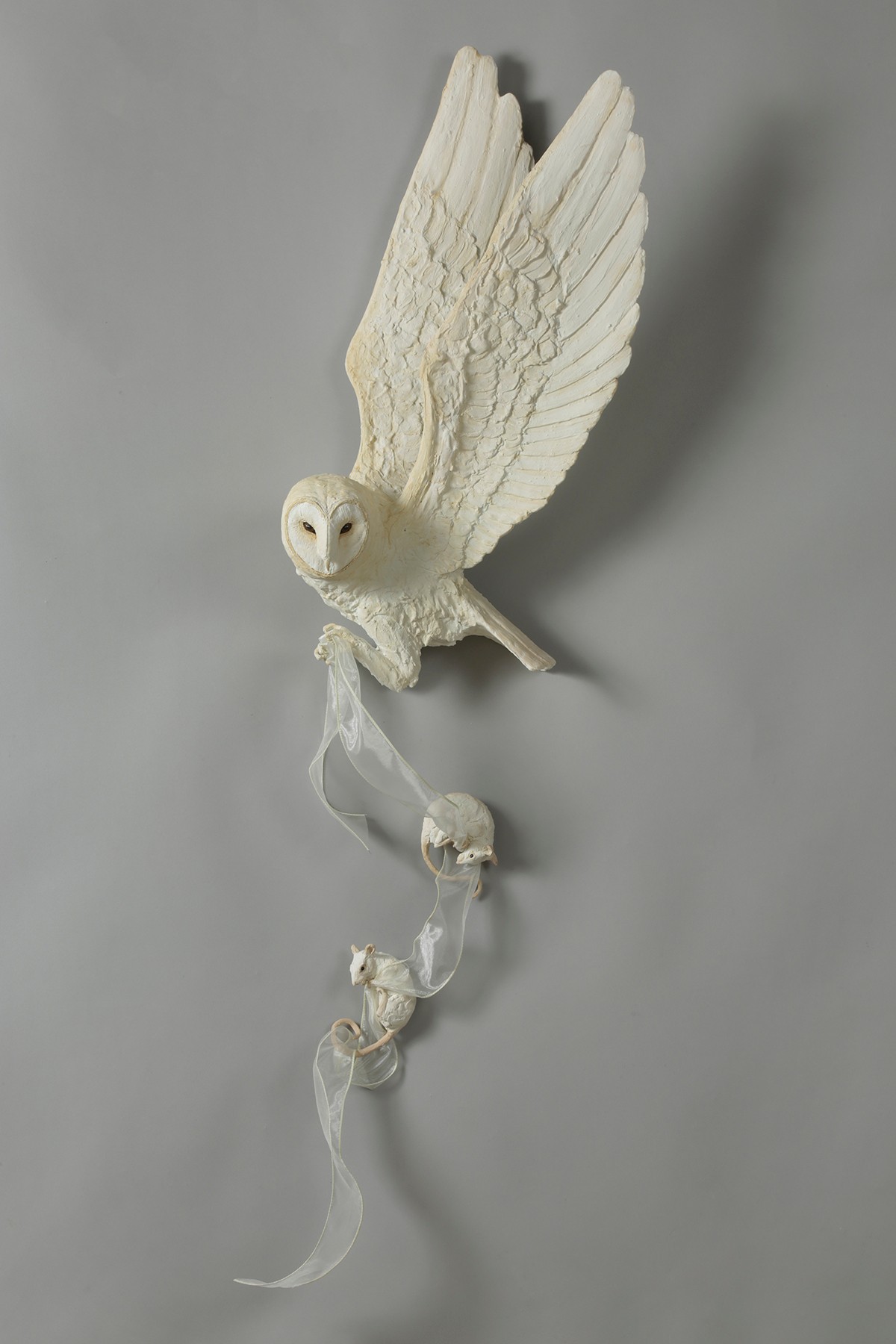We recently connected with Christine Kosiba and have shared our conversation below.
Christine, looking forward to hearing all of your stories today. Can you talk to us about a project that’s meant a lot to you?
A truly meaningful commission was The Sixteen Frogs project. I have a soft spot for art that raises awareness of environmental concerns. I feel strongly that we as a society have become disconnected from our place in the natural world. We share this planet with all living creatures and this disconnect is to our detriment physically and emotionally. The Sixteen Frogs project was entirely community funded, strives to create public awareness while providing an interactive at experience for the community. I was honored to create the sixteen native green frogs strategically placed around the town of Blacksburg, VA. Frogs are the perfect choice for this project as they are good bio-indicators. There is a frog-finder map that highlights the location of each frog, which all have a name based on a prominent figure in Blacksburg’s history. The guide also suggests ways we can all make a difference with respect to restoring and maintaining the health of Strouble Creek and the broader watershed which affects downstream communities. The Sixteen Frogs project was particularly special due to the grassroots effort to bring together this project celebrating the community’s history and natural beauty and the need to protect and preserve it.





Christine, before we move on to more of these sorts of questions, can you take some time to bring our readers up to speed on you and what you do?
I earned a BA and MA in Education and taught in the public school system for twelve years before pursuing art full time. During that time, I worked with students with emotional and behavioral challenges and found clay to be a powerful tool in my classroom. Working with clay gave my students a creative, healing and expressive outlet. Having a background in education, it was a natural evolution for me to begin teaching sculpture workshops.
I work intuitively, allowing the sculpture to develop organically from clay coils and slabs of clay. Sculptures are fired multiple times with layers of color applied in a painterly fashion to achieve surface depth and interest. Found objects may be incorporated if they enhance the narrative of the piece. Each piece has its own evolution and story which guides its ultimate form and finish.
The thing I am most proud of as an artist is that I am constantly striving to grow and learn as my work evolves while staying true to subject matter that resonates with me. I am grateful I am able to make my work and give back to environmental causes I believe in.
What do you find most rewarding about being a creative?
When I think about what is the most rewarding aspect of being an artist , its difficult to choose one thing. The act of creating, by itself, is rewarding in many ways. It is a learning process that continues throughout your career. In these lessons come both personal and professional growth. There is also the satisfaction of working with my hands and seeing an idea come to life. While I love all mediums, the malleability of clay grounds me. Ultimately, I believe the most rewarding part for me is when my work resonates with someone and they have an emotional response to a piece. I have been gifted with so many stories through the years of how a sculpture has played some role in healing through grief, rehabilitation or chemotherapy, or how a piece celebrated an anniversary, birth, milestone or life well-lived. I cannot express how humbled I am when a work finds its way into people’s lives and hearts and plays some role in honoring milestones of this journey we all share.




How can we best help foster a strong, supportive environment for artists and creatives?
Art plays an important role in a vital, healthy and diverse society. It inspires innovation, creativity and community. I believe supporting the arts begins in your own community. Of course, one of the obvious ways to support artists is to buy their work. I think this choice is often a mindset. Buying one intentionally chosen, hand-crafted mug from a local artist versus purchasing mass-produced mugs from a supersize chain helps keep the potter in business but also makes that cup of coffee much more special. Beyond the actual purchase of artwork, a wonderful way to support the Arts is to simply show up – attend gallery openings and exhibitions, make time to listen to artist talks, watch performances or visit museums. These events are for everyone. They can offer creative inspiration, self-reflection, aesthetic beauty and thought-provoking discussion. Volunteering is a great way to connect with others and support the Arts. Arts Councils, museums, art and craft schools and creative children’s camps are always in need of extra hands and hearts. I believe supporting the Arts benefits us individually and collectively. It is a direct reflection of society and culture and informs how we connect and relate to each other and our world.
Contact Info:
- Website: christinekosiba.com
- Instagram: ChristineKosibaSculpture
- Facebook: facebook.com/ChristineKosibaSculpture
Image Credits
Tim Barnwell for all except the bat which was Bill Gozansky


